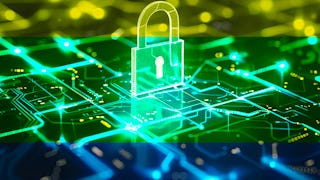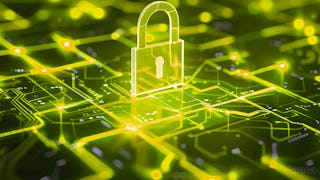This course is tailored for network engineers, IT managers, cybersecurity specialists, and IT consultants seeking to deepen their knowledge of SD-Branch technology and its security features. It offers an introductory overview of SD-Branch, covering its architecture, implementation, and the specific security measures it incorporates to safeguard network infrastructure and data.

Saving $160 on access to 10,000+ programs is a holiday treat. Save now.


Introduction to Software-Defined (SD) Branch
This course is part of Secure SD Branch Specialization

Instructor: Muhammad Ramzan Khan
Included with 
Recommended experience
Skills you'll gain
Details to know

Add to your LinkedIn profile
14 assignments
See how employees at top companies are mastering in-demand skills

Build your subject-matter expertise
- Learn new concepts from industry experts
- Gain a foundational understanding of a subject or tool
- Develop job-relevant skills with hands-on projects
- Earn a shareable career certificate

There are 3 modules in this course
This module provides a comprehensive introduction to the concept of SD-Branch, covering its fundamental principles, key components, benefits, and challenges compared to traditional branch networks. It lays the foundation for understanding the design, implementation, and management of SD-Branch solutions.
What's included
11 videos4 readings5 assignments1 discussion prompt1 plugin
This module provides an in-depth understanding of the fundamental building blocks of SD-Branch, allowing learners to comprehend the interconnectedness of Software-Defined Networks (SDN) principles, SD-WAN, SD-LAN, and other components necessary for delivering a comprehensive SD-Branch solution.
What's included
8 videos3 readings5 assignments2 discussion prompts1 plugin
This module offers an in-depth analysis that compares the benefits and challenges associated with traditional branch networks and SD-Branch. By examining the advantages and disadvantages of each network infrastructure, learners gain a comprehensive understanding of the intricacies involved in both systems.
What's included
5 videos4 readings4 assignments1 discussion prompt2 plugins
Earn a career certificate
Add this credential to your LinkedIn profile, resume, or CV. Share it on social media and in your performance review.
Instructor

Offered by
Explore more from Security
 Status: Free Trial
Status: Free Trial Status: Free Trial
Status: Free TrialLearnQuest
 Status: Free Trial
Status: Free Trial Status: Free Trial
Status: Free TrialGeorgia Institute of Technology
Why people choose Coursera for their career





Open new doors with Coursera Plus
Unlimited access to 10,000+ world-class courses, hands-on projects, and job-ready certificate programs - all included in your subscription
Advance your career with an online degree
Earn a degree from world-class universities - 100% online
Join over 3,400 global companies that choose Coursera for Business
Upskill your employees to excel in the digital economy
Frequently asked questions
To access the course materials, assignments and to earn a Certificate, you will need to purchase the Certificate experience when you enroll in a course. You can try a Free Trial instead, or apply for Financial Aid. The course may offer 'Full Course, No Certificate' instead. This option lets you see all course materials, submit required assessments, and get a final grade. This also means that you will not be able to purchase a Certificate experience.
When you enroll in the course, you get access to all of the courses in the Specialization, and you earn a certificate when you complete the work. Your electronic Certificate will be added to your Accomplishments page - from there, you can print your Certificate or add it to your LinkedIn profile.
Yes. In select learning programs, you can apply for financial aid or a scholarship if you can’t afford the enrollment fee. If fin aid or scholarship is available for your learning program selection, you’ll find a link to apply on the description page.
More questions
Financial aid available,

